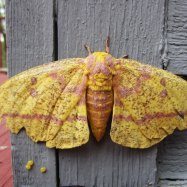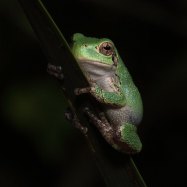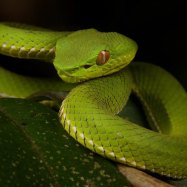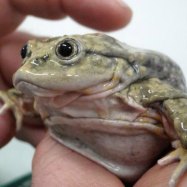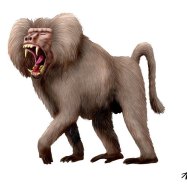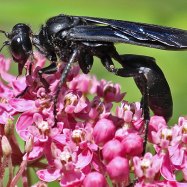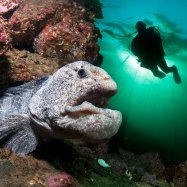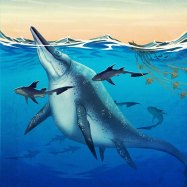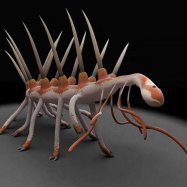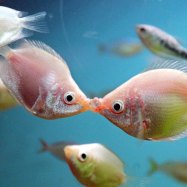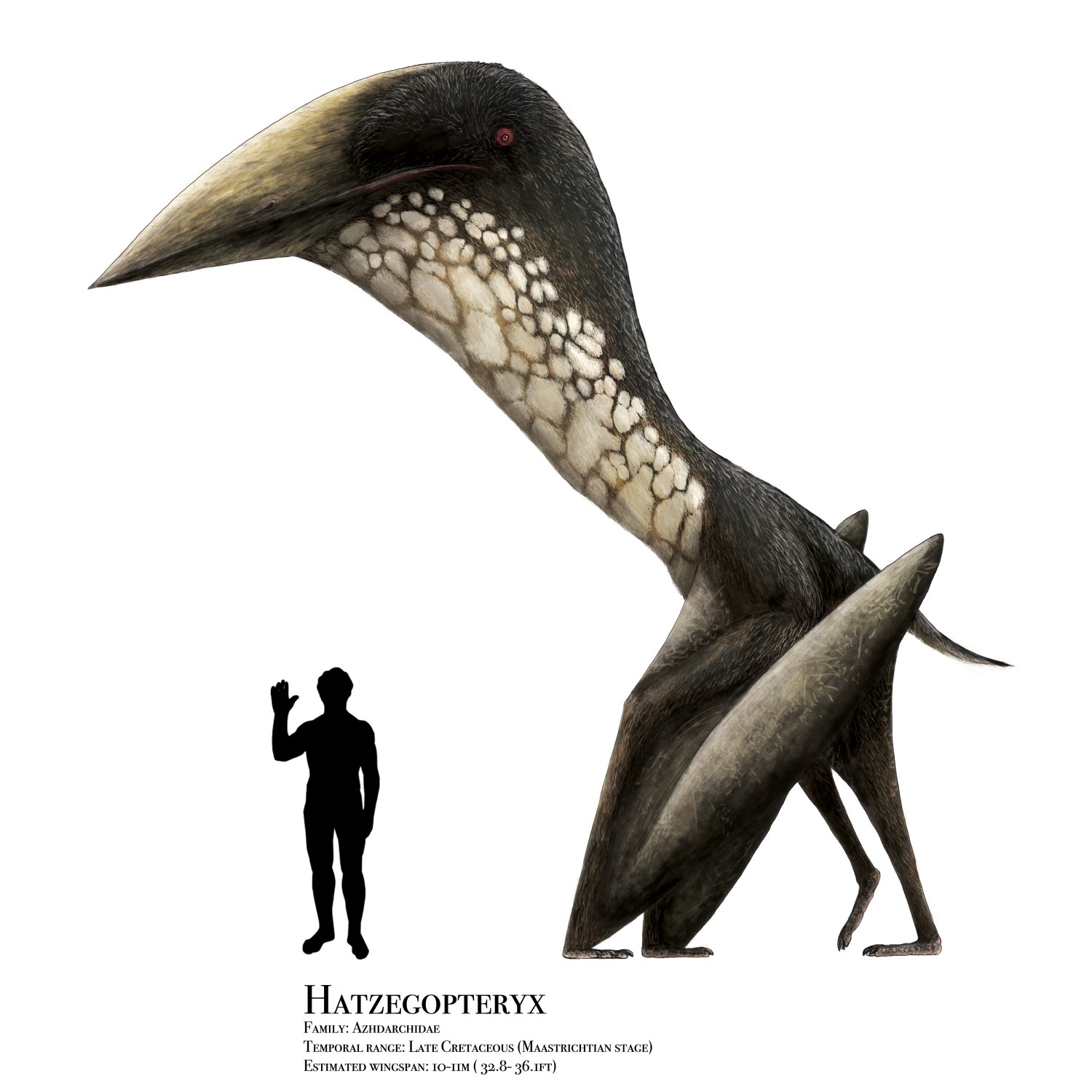
Hatzegopteryx
Up to 10 meters
Meet Hatzegopteryx, a massive flying reptile that roamed the Hațeg Basin over 66 million years ago. With a wingspan of up to 10 meters, it is one of the largest pterosaurs ever discovered. Belonging to the family Azhdarchidae, Hatzegopteryx had a long neck, sharp beak, and a slender body, making it a formidable hunter. Its name means Hațeg basin wing in honor of where it was found. As one of the largest animals to ever take flight, this giant creature is a fascinating piece of prehistoric history.
Animal Details Summary:
Common Name: Hatzegopteryx
Kingdom: Animalia
Habitat: Terrestrial
Welcome to the World of Hatzegopteryx: The Giant Flying Reptile of Europe
Have you ever heard of a creature so large that it could rival some of the biggest dinosaurs? Meet Hatzegopteryx, also known as the "Transylvanian Giant," one of the largest flying animals to ever exist. With a wingspan stretching up to 10 meters and a body shape resembling a pterodactyl, this incredible animal may seem like something out of a sci-fi movie. But make no mistake, Hatzegopteryx was a real animal that once roamed the skies of Europe millions of years ago.With a name that is hard to pronounce and an appearance that is hard to forget, Hatzegopteryx has fascinated researchers and paleontologists for decades Hatzegopteryx. In this article, we will dive deeper into the world of this prehistoric creature and uncover its unique features, habitat, and behaviors.
Discovering Hatzegopteryx
Hatzegopteryx was first discovered in the 1980s by paleontologist Eric Buffetaut in the Hațeg Basin of Romania. This region, known for its rich fossil deposits, is located in the southeastern Carpathian Mountains and was once a part of the "Island of Hațeg," a landmass isolated by the advancing Tethys Sea during the late Cretaceous period. This isolation led to the evolution of unique animals found only in this region, including Hatzegopteryx.When Buffetaut first encountered the fossils, he believed that they belonged to an unknown species of pterosaur, the flying reptile group that lived alongside dinosaurs. However, it wasn't until 2002 that the fossils were fully studied and classified as a new genus and species, Hatzegopteryx thambema. The name "Hatzegopteryx" was derived from the Greek words "hatchet" and "wing," referring to its large, axe-like beak and expansive wingspan. The species name "thambema" means "wonder" in Romanian, reflecting the awe and fascination that this giant creature evokes.
The Anatomy of a Giant
One of the most striking features of Hatzegopteryx is its size Hairy Woodpecker. With a wingspan of up to 10 meters, it was one of the largest flying animals to ever exist. To put this into perspective, its wingspan is equivalent to the length of a school bus. The body of Hatzegopteryx was also enormous, estimated to be around 4.5 meters long and weighing over 200 kg, making it larger than a polar bear.Hatzegopteryx had a body shape similar to other pterosaurs, with a small head, long neck, and elongated body. However, what set it apart from other pterosaurs was its massive beak, measuring up to 3 meters in length. This beak was curved like an axe and had sharp, serrated edges, indicating that Hatzegopteryx was a carnivorous predator.
Unlike other flying animals, Hatzegopteryx had a relatively short and stocky body, with thick bones that could support its weight. This adaptation was necessary for a creature of its size to take flight and maneuver in the air. Its wings were also shorter and sturdier than other pterosaurs, allowing it to flap less frequently and conserve energy during flight.
The Enigma of Coloration and Feeding Strategy
Despite numerous studies and research, very little is known about the coloration and feeding strategy of Hatzegopteryx. Since it lived in the late Cretaceous period, it is believed that it shared a similar coloration to other pterosaurs and dinosaurs, with shades of brown, black, and white. However, this assumption is based on paintings and depictions, as there is no definitive evidence to confirm its actual coloration.As for its feeding strategy, we can only speculate. With its gigantic size and sharp beak, it is safe to assume that Hatzegopteryx was a formidable predator. However, there is still debate among researchers about its preferred prey. Some believe that it was a scavenger, feeding on the carcasses of dead animals. Others believe that it was an active hunter, using its powerful wings and beak to swoop down and grab smaller dinosaurs and other pterosaurs. Until more evidence is found, we can only imagine the hunting techniques of this incredible animal.
A Terrestrial Habitat
One of the most fascinating things about Hatzegopteryx is its terrestrial habitat. Unlike most other pterosaurs, which were adapted for a life in the ocean or near water bodies, Hatzegopteryx was a strictly terrestrial animal. It lived and hunted on land, with its strong legs and powerful wings enabling it to take off and land with ease.This unique adaptation was due to the island environment of the Hațeg Basin. With limited food resources on the isolated landmass, Hatzegopteryx had to adapt to hunt on land to survive. Its beak and teeth were also suited for terrestrial prey, further supporting this theory.
A Lost World in Romania
The Hațeg Basin, where Hatzegopteryx was found, is a treasure trove of fossils from the Cretaceous period. Apart from this giant pterosaur, numerous other unique animals have been discovered in this region. These include dwarf dinosaurs, giant crocodiles, and turtle-like creatures called "cheloniellids."This isolated island was also home to an ancient ecosystem, with tropical forests, lakes, rivers, and swamps. The climate was warm and humid, like a modern-day rainforest. This lost world in Romania has provided researchers with a glimpse into the diversity of life on our planet millions of years ago.
The Legacy of Hatzegopteryx
Even though Hatzegopteryx was an enormous and powerful animal, it had a relatively short lifespan. It lived during the late Cretaceous period, around 70-66 million years ago, and became extinct alongside the non-avian dinosaurs. Its fossils have provided valuable insights into the evolutionary history of pterosaurs and the unique adaptations required for life in a terrestrial habitat.Today, Hatzegopteryx continues to fascinate and capture our imagination, even though it has been extinct for millions of years. Its gigantic size, unusual features, and mysterious nature make it an intriguing subject for research and study. Who knows what other secrets this prehistoric giant may hold, waiting to be uncovered in the vast and mysterious world of paleontology.

Hatzegopteryx
Animal Details Hatzegopteryx - Scientific Name: Hatzegopteryx
- Category: Animals H
- Scientific Name: Hatzegopteryx
- Common Name: Hatzegopteryx
- Kingdom: Animalia
- Phylum: Chordata
- Class: Reptilia
- Order: Pterosauria
- Family: Azhdarchidae
- Habitat: Terrestrial
- Feeding Method: Carnivorous
- Geographical Distribution: Europe
- Country of Origin: Romania
- Location: Hațeg Basin
- Animal Coloration: Unknown
- Body Shape: Gigantic
- Length: Up to 10 meters
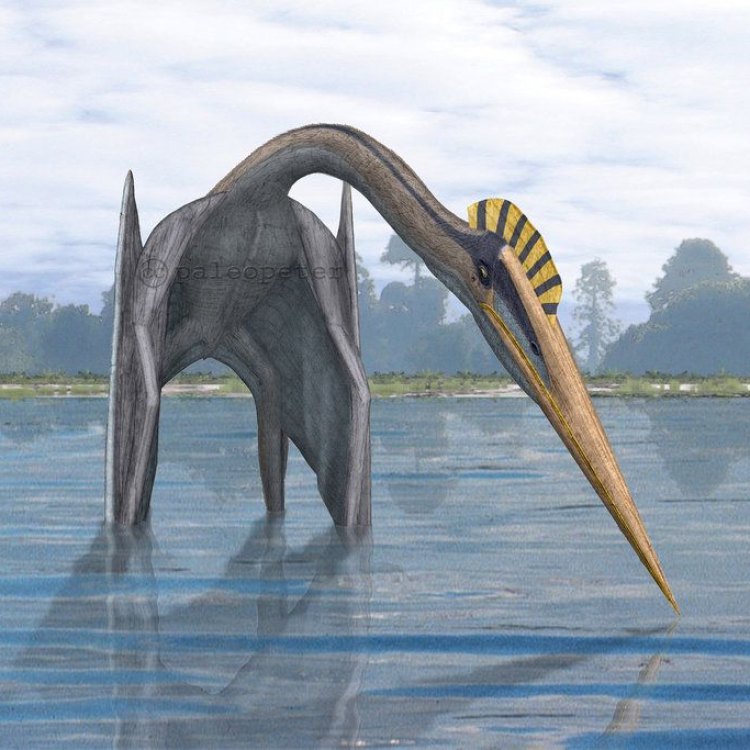
Hatzegopteryx
- Adult Size: Very large
- Average Lifespan: Unknown
- Reproduction: Egg-laying
- Reproductive Behavior: Unknown
- Sound or Call: Unknown
- Migration Pattern: Unknown
- Social Groups: Unknown
- Behavior: Unknown
- Threats: Extinction
- Conservation Status: Extinct
- Impact on Ecosystem: Unknown
- Human Use: None
- Distinctive Features: Large, elongated jaws; long neck; wingspan of 10-12 meters
- Interesting Facts: One of the largest known flying animals; lived during the Late Cretaceous period; likely a predator
- Predator: Unknown
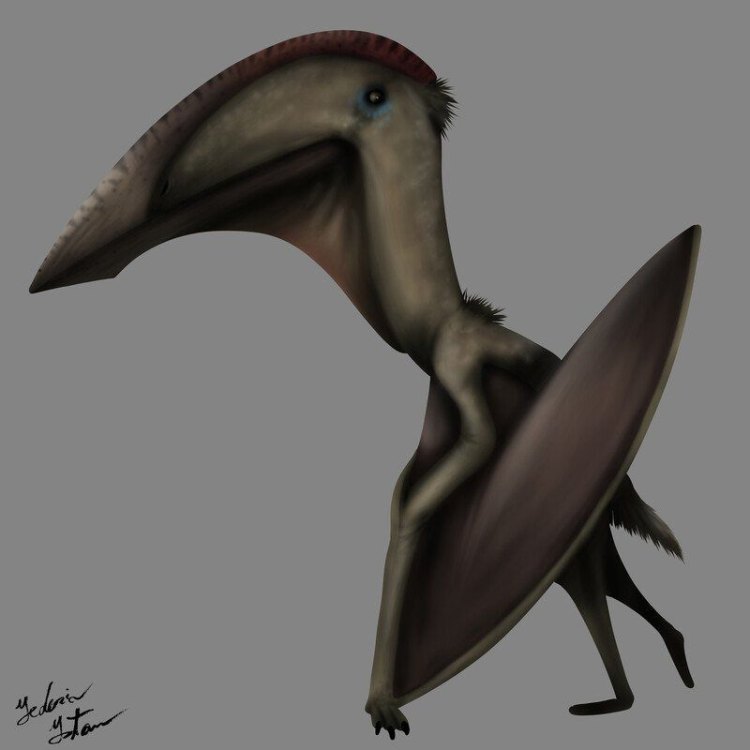
Hatzegopteryx
The Massive Hatzegopteryx: A Fascinating Piece of Prehistoric Aviation
The world of dinosaurs is filled with fascinating creatures, each with their own unique features and evolutionary adaptations. Some of these prehistoric animals have captured our imagination for centuries, and rightfully so. But there was one flying dinosaur that stood out from the rest, with its sheer size and incredible features – Hatzegopteryx.Dating back to the Late Cretaceous period, Hatzegopteryx was one of the largest flying animals to ever exist, with a wingspan of 10-12 meters PeaceOfAnimals.Com. This gigantic pterosaur was discovered in Romania in 2002, and since then, it has captured the interest of paleontologists and dinosaur enthusiasts alike.
So, what makes Hatzegopteryx so unique? Let's take a closer look at this ancient flyer and uncover its distinctive features, behavior, and impact on the ecosystem.
A Massive Adult Size and Mysterious Lifespan
The first thing that stands out about Hatzegopteryx is its size. As mentioned earlier, it had a wingspan of 10-12 meters, which is equivalent to the length of a school bus. Even more astonishing, it is estimated to have weighed between 200-250 kilograms, making it one of the heaviest flying animals ever recorded.But what is even more impressive is that these measurements were only for the adult Hatzegopteryx. It is believed that this pterosaur had a unique trait where it experienced "gigantism" during its growth, much like modern-day birds such as albatrosses and condors.
However, the average lifespan of Hatzegopteryx is still unknown. It is speculated that it could have lived up to 20-30 years, but this remains a mystery that only fossils can help solve Hamburg Chicken.
Egg-laying Reproduction and Mysterious Reproductive Behavior
Similar to most pterosaurs, it is believed that Hatzegopteryx reproduced through egg-laying. This was the primary mode of reproduction for all flying reptiles during the Mesozoic era. However, their reproductive behavior still remains a mystery.Fossil evidence suggests that Hatzegopteryx may have had communal nesting sites, similar to modern-day birds. This could indicate that they were social animals, but more research is required to confirm this theory.
Sound or call is another aspect of their reproductive behavior that is yet to be discovered. It is believed that pterosaurs could make sounds with the help of a resonating structure in their throat, but there is no concrete evidence to suggest this for Hatzegopteryx.
Unknown Migration Pattern, Social Groups, and Behavior
The elusive behavior of Hatzegopteryx extends beyond just reproductive behavior. Little is known about its migration patterns, whether it traveled in groups, or even what its social structure may have been.It is believed that pterosaurs, including Hatzegopteryx, could fly long distances, but whether they migrated or not is still uncertain. As for their social groups and behavior, there is no evidence to indicate if they were solitary animals or if they lived in groups like modern-day birds.
Therefore, it is safe to say that Hatzegopteryx still remains an enigma, and paleontologists are eager to uncover more about its behavior and social dynamics.
Unique Distinctive Features
Hatzegopteryx's most distinctive features are its lightweight yet formidable jaws and long neck. Its jaws were lined with sharp teeth, suggesting that it was likely a predator. Its long neck may have aided in catching prey or even allowed for better maneuverability while flying.But perhaps the most fascinating feature of Hatzegopteryx was its massive wingspan, which was made possible due to its unique wings. Unlike other pterosaurs, Hatzegopteryx had a long, narrow wing shape, making it incredibly aerodynamic and allowing for efficient flight.
The combination of all these features made Hatzegopteryx a force to be reckoned with in the prehistoric skies.
Interesting Facts About Hatzegopteryx
Besides its massive size and unique features, there are a few other interesting facts about Hatzegopteryx that add to its captivating nature.First and foremost, it is believed that Hatzegopteryx was a predator, possibly preying on other pterosaurs, small dinosaurs, and even fish. Its sharp teeth and wingspan of a small airplane were perfect tools for hunting and survival.
Additionally, Hatzegopteryx is one of the largest known flying animals, second only to Quetzalcoatlus with a wingspan of 10-12 meters. This is a staggering feat, especially considering that it lived during the Late Cretaceous period around 66 million years ago.
But sadly, Hatzegopteryx is no longer around to amaze us with its incredible size and features. Like many other prehistoric species, it became extinct, and its fossils are the only remaining evidence of its existence.
The Extinction of Hatzegopteryx and Its Impact on the Ecosystem
Just like many other dinosaurs and prehistoric creatures, the exact cause of Hatzegopteryx's extinction is still a mystery. However, it is believed that it became extinct during the K-Pg extinction event, coinciding with the extinction of dinosaurs.The K-Pg extinction event, also known as the Cretaceous-Paleogene extinction event, was a significant event that wiped out around 75% of all plant and animal species on Earth, including non-avian dinosaurs and pterosaurs like Hatzegopteryx.
But what was the impact of Hatzegopteryx's extinction on the ecosystem? Since much is still unknown about its behavior and diet, it is challenging to determine its precise impact. However, with its massive size and potential predatory nature, it could have had a top-down effect on the food chain, being a crucial predator in its ecosystem.
No Human Use, Just Fascination
In contrast to many other prehistoric creatures, Hatzegopteryx holds no significance for human use. Its fossils are priceless artifacts that offer insight into a period long gone, and its discovery has provided valuable information for paleontologists and researchers studying the Mesozoic era.But perhaps its most significant impact has been on the world of science and fascination. With its massive size and unique features, Hatzegopteryx continues to capture our imagination, inspiring movies, books, and documentaries about the ancient world of dinosaurs.
In Conclusion
Hatzegopteryx was a unique and captivating creature that soared the prehistoric skies with its immense wingspan. Little is known about its behavior and reproductive patterns, but what we do know is that it was a fierce predator with impressive adaptations, making it one of the most intriguing species to ever exist.With its extinction and remains being discovered relatively recently, we can only speculate about its life and impact on the ecosystem. But one thing is for sure, Hatzegopteryx continues to fascinate and captivate us, reminding us of a world far different from the one we know today.

Welcome to the World of Hatzegopteryx: The Giant Flying Reptile of Europe
Disclaimer: The content provided is for informational purposes only. We cannot guarantee the accuracy of the information on this page 100%. All information provided here may change without prior notice.

